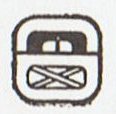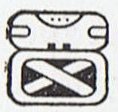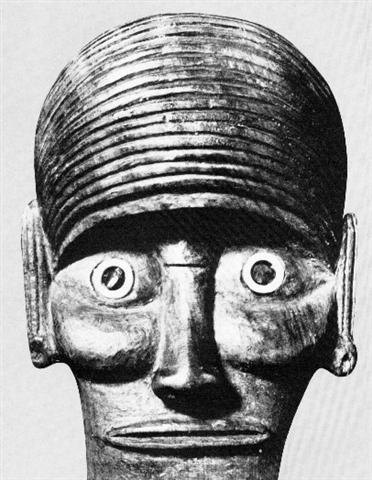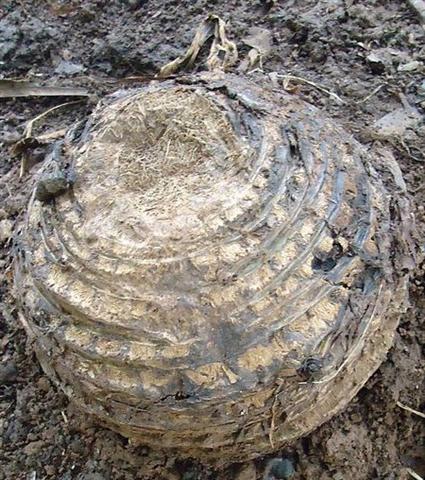1. From the account of 'Noman' in the cave of the one-eyed giant (strong as the Herculean Spring Sun) and from Homeros' description of his success by twirling a hot 'spear' around in 'the eye' we move on to look at another 'cosmic map of time': 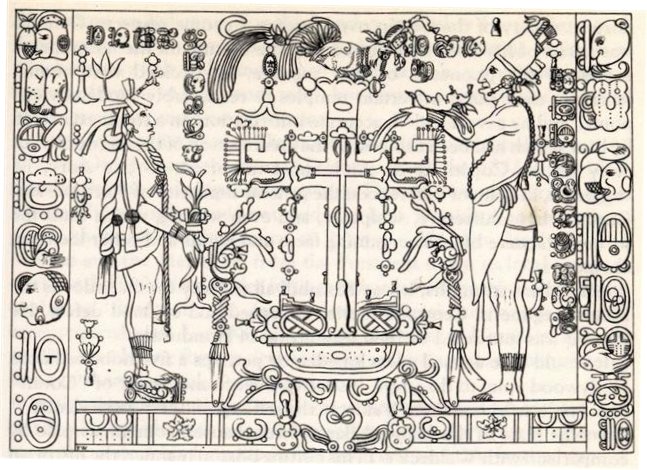 Temple of the Cross in Palenque, drawing by Almendáriz, engraved by Waldeck, in del Río, 'Description of an Acient City'. Copied by me from the reproduction in Michael D. Coe, Breaking the Maya Code. Although we by no means are prepared to 'read' this great text in pictorial form, a central figure formed like a cross can be observed. The vertical 'spear' of the cross - though drawn more like an arrow - presumably illustrates the south-north dimension between the solstices and the 'cross-beam' the east-west direction which Sun and the other stars move every day. An arrow is capable of moving quick as a bird, such should be its symbolism, and at its end there is a tail feather. But the bird perching at the top end of the cross in the picture is not moving. Likewise the 'arrow' is standing still on its tail. The arrow has turned into a 'spear' planted in the ground. ... I became curious about this star ... called Nuutuittuq [= 'never moves'] ... So, on the lee side of our uquutaq (a snow windbreak) I positioned a harpoon pointing directly at this particular star to see if it would move. In the morning I checked it and discovered that the Tukturjuit (Ursa Major) had changed their position completely but the harpoon still pointed at this star ... I had discovered the stationary star ... The tail end of the arrow is resting on the rectangular surface of the earth - seemingly not planted in the ground - and we can therefore interpret this surface to be the stable 'rock bottom' of the earth:
Papapapa is the opposite of papa - at the slightest movement the bird would fly away and the arrow would topple. The arrow is inserted in the black humus, I guess, because the 'eyes' on both sides of the arrow's tail are drawn like the 'bars' characterizing the 60 first days of the year:
Above the head of the arrow there is a horizontal straight line separating it from the topmost part. This horizontal 'cut' is a sign, I believe, telling that it is the time of the arrow standing still (vero). At winter solstice Sun (the arrow) is standing still as if dead. However, a quick hurl of a spear towards him has the potential to wake him up: ... as soon as the king lands, and has thrown off his cloak, he darts his spear at him, from a distance of about thirty paces, and the king must either catch the spear in his hand, or suffer from it: there is no jesting in the business ... The horizontal straight 'cut' line can be interpreted to say that the top end has been severed, just as when Jupiter is 'decapitated' in order to insure a new generation, a new cycle of growth. The hole above the point of the spear can be visualized as the egg which the topmost bird has delivered. The egg is the 'head' of the previous cycle:
The horizontal cut line across the nose of this ua staff has the cap of the head full with curved lines. Maybe they represent the ridges of a banana corm:
And then we can guess that also the ua glyph type depicts such ridges, with 'the banana corm' as the last stage of the old year - in the season of the 'banana plantation' where Ure Honu later would find it (the skull of Hotu Matua):
The first dark nights of a new year seem to be locked tight in time, as illustrated in Pop. In Eb6-32 (a Saturday) we can imagine henua (earth) covering life (light). The kan (probably meaning yellow) sign at top left in Pop covers only one of the 'limbs' of the pair of interlocking 'bands' which keeps time in order. Yellow ought to refer to Moon, and presumably she rules one of the quarters of the year. Then Tane will raise the sky roof a little, unlocking the knot of Pop. Although there still is darkness some light appears in the sky. The 'watery cup' at the top of the superfix in Zip probably means 'land' still is not visible, but the 'banana corm ridges' of ua could illustrate how land lies close in front. According to the order of the week Monday (moon crescents look somewhat like bananas) comes immediately before the day of Mars. In G there is no clear ua glyph, but at the beginning of line b4 there is a glyph (Gb4-3), which gives associations to the time of the 'banana corm':
The old Sun eye (bright at left, weak at right) - the head of tagata - is at left. The ua sign is not oriented open in front as in Eb6-34 but turned on its back, a sign of birth (because it is not lying on its face and it is Friday). 4 quarters each with 3 months (4-3) are in the past, and also 24 nights beyond the measure 300 days for Sun. 4 * 7 = 28 are the number of nights when the face of Moon is visible, and tamaiti in Gb4-7 (with ordinal number 328) has 6 + 6 feathers. Probably there is a cardinal point at Gb4-7. If we add 328 + 472 the result seems to confirm it (viz. 800). The reversed hau tea in Gb4-1 means there is no light from the sky. 322 suggests the completion of 3 cycles. The thunder of Polyphemus casting down 'a grievous weight of dry wood' on the floor of his cave was followed by him lifting up a huge doorstone weighing more than what 22 * 4 wains could carry: ... 'Yes, for he was a monstrous thing and fashioned marvelously, nor was he like to any man that lives by bread, but like a wooded peak of the towering hills, which stands out apart and alone from others.' Odysseus, choosing twelve men, the best of the company, left his ships at shore and sallied to the vast cave. It was found stocked abundantly with cheeses, flocks of lambs and kids penned apart, milk pails, bowls of whey; and when the company had entered and was sitting to wait, expecting hospitality, the owner came in, shepherding his flocks. He bore a grievous weight of dry wood, which he cast down with a din inside the cave, so that in fear all fled to hide. Lifting a huge doorstone, such as two and twenty good four-wheeled wains could not have raised from the ground, he set this against the mouth of the cave, sat down, milked his ewes and goats, and beneath each placed her young, after which he kindled a fire and spied his guests ... Homeros wrote of 'four-wheeled wains'. Each wain could thus represent a cycle with 4 quarters. After 22 such cycles comes the 'door' to a new era. Let us look at Gb4-22:
A peculiar tagata at left is the same entity as the right part of the glyph, rima aueue which we remember from earlier.
What looks like a fully alive Sun person is then running again in Gb4-26:
|
||||||||||||||||||||||||||||||||||||||||||||||||||||||||||||||||||||||||||||||||||||||||

